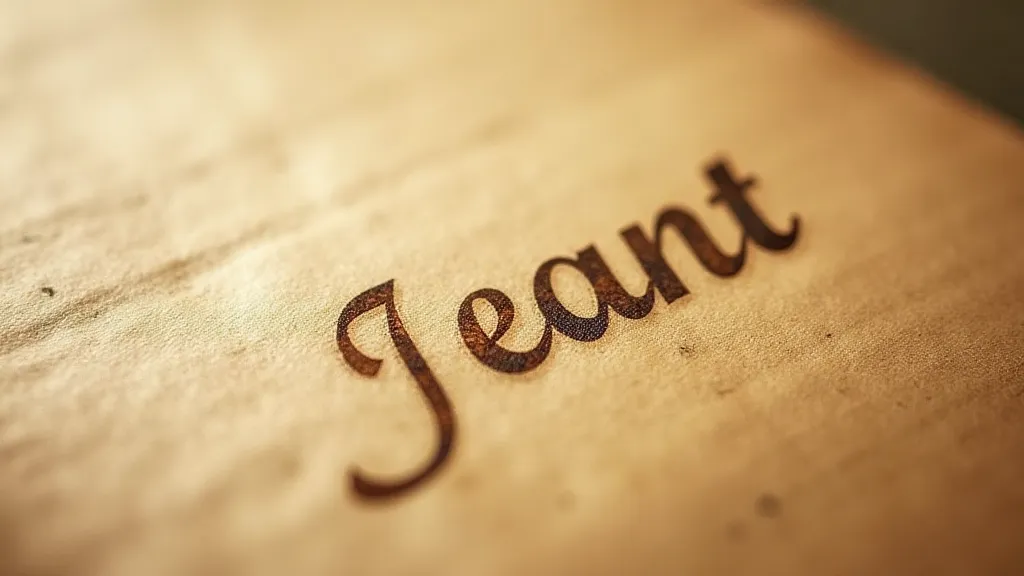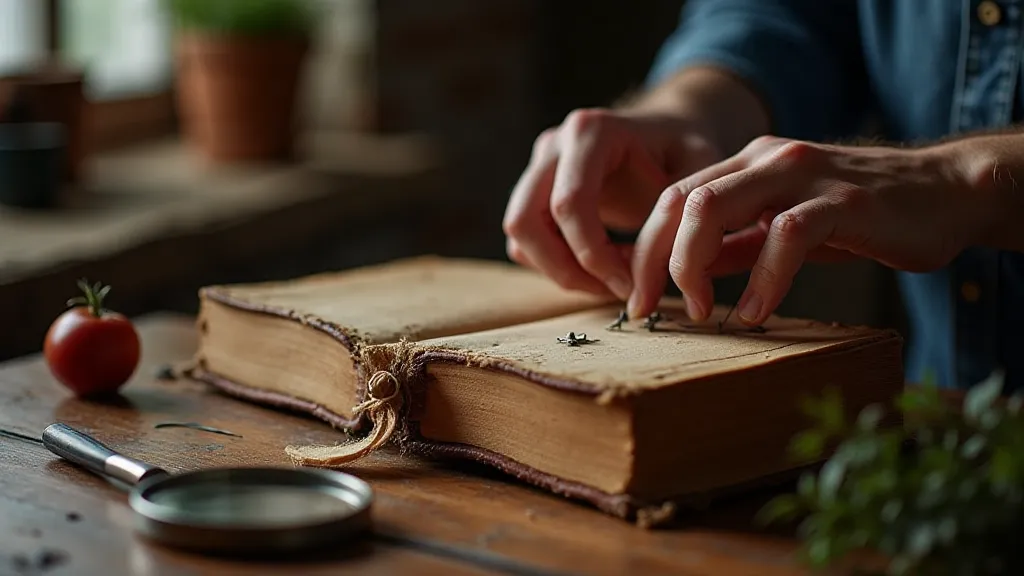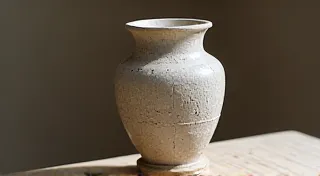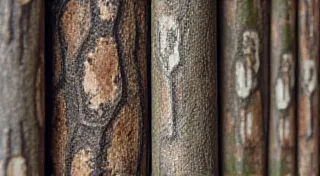Parchment Whispers: Unlocking the Material Memory of Ancient Scripts
There's a certain reverence that settles upon you when you hold a piece of true parchment. It’s not just the physical sensation – the subtle graininess, the warmth against your fingertips – but the weight of history it carries. It's a tactile connection to centuries past, a whisper of voices and ideas that have resonated across time. For those of us drawn to the art of leather bookbinding, parchment isn’t just a substrate for ink; it's a living archive, imbued with a unique material memory.
Unlike paper, which is derived from wood pulp, parchment is made from animal skin, typically sheep, goat, or calf. The process is surprisingly involved. After the skin is removed, it's soaked in lime to loosen the hair and then meticulously stretched on a frame and scraped clean. This careful manipulation results in a material far more durable and resilient than paper. It's this inherent strength, this ability to withstand the ravages of time, that makes parchment so treasured in the world of historical bookbinding.

The Enduring Legacy of Parchment
Consider the Book of Kells, the Lindisfarne Gospels, or the countless medieval manuscripts housed in libraries and archives worldwide. The survival of these invaluable works is, in no small part, thanks to the enduring qualities of parchment. Imagine the labor involved in producing enough parchment for a single large manuscript! It speaks to the immense value placed on preserving knowledge and the dedication of the scribes and illuminators who labored over these treasures. The intricacies of the craft are a testament to the profound respect for knowledge and the dedication to preserving it through generations.
My own fascination with parchment began with a crumbling, 19th-century ledger I discovered at an antique shop. The leather binding was cracked and brittle, but the parchment pages within were remarkably intact, filled with elegant script and faded ink sketches. It wasn't a masterpiece, just a record of daily transactions, but it felt profoundly personal. I imagined the hand that penned those entries, the life it documented, the stories hidden within the simple columns of numbers. Restoring the leather binding became more than a craft project; it was a way to honor the memory of that unknown individual and preserve a small piece of history. The entire process demands a deep understanding of the tools and techniques, which echoes the long and rich traditions of Binding Time: A Chronology of Leatherworking Traditions in Book Arts.
This experience underscored a critical point: parchment isn’s just about the material itself; it's about the narratives it holds. Each crease, each stain, each imperfection tells a silent story. The fragility of parchment is a constant reminder of the ephemeral nature of existence and the importance of safeguarding our cultural heritage. Sometimes, the structure of a binding itself tells a story, much like the intricate patterns one might explore in the stitch as cartography, mapping the narrative through binding patterns.
Understanding Parchment's Unique Characteristics
Working with parchment requires a different mindset than working with paper. Its texture is irregular, its thickness can vary, and it absorbs ink differently. It’s less forgiving of mistakes, demanding a gentler touch and a greater awareness of the material's limitations. This is why a thorough understanding of parchment’s behavior is essential for anyone undertaking book repair or creating custom notebooks using this remarkable material. The process of selecting the right tools and materials, and mastering their use, forms the very foundation of the craft, detailed further in The Bookbinder's Toolkit: Essential Instruments of the Craft.
The absorbency of parchment dictates the type of ink best suited for it. Traditional iron gall ink, while incredibly durable, can be somewhat aggressive and may cause the parchment to swell and buckle. Contemporary alternatives, such as acrylic inks, are often preferred for their gentler impact on the material. Proper sizing – the application of a thin layer of gelatin or other binding agent – is also crucial to control ink bleed and ensure the longevity of the writing.
Beyond ink compatibility, the elasticity of parchment plays a key role in binding. It allows for a greater degree of flexibility in spine construction, facilitating a more accommodating and durable binding structure. Historically, this flexibility has been exploited in creating complex, layered bindings, offering longevity and resilience. The creation of such personalized and enduring creations offers an opportunity for mindful practice, providing a valuable space for personal reflection, akin to the personalized notebooks explored in detail in /the-binding-as-sanctuary.
A Bookbinder's Tools List: Essential Resources
While the core principles of leather bookbinding remain constant, working with parchment necessitates a few adjustments to the standard toolkit. Here’s a brief list of essential resources, keeping parchment’s delicate nature in mind:
- Awls and Needles: Sharper and finer than those used for paper bindings.
- Strong Thread: Linen or waxed cotton thread are preferred.
- Bone Folder: For gentle manipulation and smoothing.
- Leather Glue: pH-neutral glue is vital to avoid damaging the parchment.
- Soft Brushes: For applying sizing and glue evenly.
- Parchment Cleaning Solution: A mild solution for removing surface dirt and grime.
The Craft as Restoration: A Delicate Dance
Restoring a leather-bound book with parchment pages is a deeply rewarding, albeit demanding, undertaking. It’s a process that requires patience, skill, and a profound respect for the original artifact. The goal isn't to “perfect” the book but to stabilize it, to arrest further deterioration, and to preserve its integrity as a historical document.

Cleaning parchment requires a gentle approach. Harsh chemicals can damage the fibers, while abrasive scrubbing can remove delicate surface details. In some cases, consolidation – the application of a thin layer of adhesive to strengthen weakened areas – may be necessary. Rebacking a leather spine or reinforcing a fragile board are also common restorative procedures. The delicate nature of this process highlights the importance of choosing the correct tools and ensuring a thorough understanding of both the material and the historical context.
Connecting to History: More Than Just a Craft
Ultimately, working with parchment and leather is more than just a craft; it’s a connection to the past, a conversation with the generations who came before us. It's a chance to appreciate the artistry and dedication of the scribes, binders, and craftspeople who created these enduring works of art. And, perhaps most importantly, it's a reminder of the enduring power of the written word to transcend time and connect us to the shared human experience. The act of restoring and preserving these artifacts offers a unique opportunity to appreciate the stories held within, offering a space for thoughtful contemplation much like the notebooks envisioned in /the-binding-as-sanctuary.
The subtle differences in parchment quality, the nuances of leather aging, and the evolution of binding techniques all contribute to the rich tapestry of book history. Each restored volume isn't just a physical object; it's a portal to another time, another place, another mind. The careful preservation of these artifacts ensures that their stories continue to resonate with future generations.
Consider the challenges faced by binders centuries ago, working with limited tools and resources, yet producing works of breathtaking beauty and durability. Their skill and ingenuity serve as a constant source of inspiration, reminding us that true craftsmanship transcends mere technique; it is a reflection of passion, dedication, and a deep respect for the materials at hand. The long and storied history of bookbinding traditions is explored in more detail in Binding Time: A Chronology of Leatherworking Traditions in Book Arts.
As technology continues to shape our world, the tactile experience of holding a handcrafted book becomes increasingly valuable. The scent of aged parchment, the texture of hand-stitched bindings, the weight of history in your hands – these are sensory experiences that cannot be replicated by digital screens. They offer a respite from the relentless pace of modern life, a chance to reconnect with the tangible world and appreciate the enduring power of human creativity.





